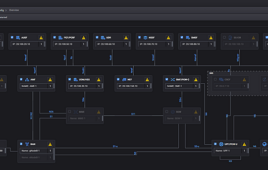As mobile payment systems like Samsung Pay, Apple Pay and Android Pay continue fighting for a foothold in the everyday lives of consumers, it seems the key to their success lies in their utility to consumers. But according to industry experts, one key component that can turn mobile payment systems into a true digital wallet is missing: real-time person-to-person (P2P) payment capabilities.
While it’s true that P2P payment systems exist in the form of Venmo and Paypal, the problem is lag.
“There are some great P2P mobile offerings in the market today from PayPal to Venmo, they are great but all of them suffer from the same issue: they are closed loop systems that require a settlement out to ACH if you want to get the actual cash,” said ACI Worldwide’s head of Digital Banking Channels Mark Ranta. “So while the shifting of money is in ‘real time’ as soon as it has to leave the ecosystem, it isn’t. The best example of where this value proposition would fall apart is if a roommate (uses) Venmo (to send) the head of the apartment rent on the day it is due to the landlord, the Venmo transfer would happen real time but the actual clearance into the head of the apartments checking account may miss the clearance of the check to the landlord.”
According to Ranta, the move toward same day or even instantaneous clearance for transactions within the next year will be crucial to strengthening both mobile payment systems and banking apps.
One company that already holds a patent for this type of technology is Mobeewave, which is currently piloting its real-time P2P system through Visa in Canada.
Mobeewave founder Maxime de Nanclas said the company’s near real-time cash-in, cash-out technology represents a huge shift in thinking from the cash-out-only approach of many other mobile payment systems. The difference, he said, is a focus on the consumer rather than the merchant that allows Mobeewave’s payment system to act as a true digital wallet.
“Vemo takes up to two to three days to process and it’s not as instant as cash,” Nanclas said. “What Mobeewave is about is giving (consumers) this experience of instant cash in your wallet, only it’s digital, and it’s available in 30 minutes or so.”
According to Nanclas, Mobeewave is a proximity-based system, using NFC technology that allows consumers to “tap” their smartphone or credit card to send money via an encrypted exchange to anyone with a banking or mobile wallet app equipped with Mobeewave payment-acceptance. The system is compatible with both contactless credit cards like Visa’s PayWave and MasterCard’s PayPass and contactless mobile payment systems like Android Pay, Apple Pay and Samsung Pay. The goal of the system, Nanclas said, is to recreate the simplicity and immediacy of cash transactions in digital form.
Nanclas said Mobeewave is aiming for a full launch in 2016.
Though companies like Mobeewave will likely heat up the competition, Ranta said he expects the main players in the mobile payment space will boil down to big companies like Apple and Samsung as well as financial institutions like Chase.
“While I think Venmo and PayPal have served a need to date, their differentiated state from the others will diminish with the coming market changes,” Ranta said. “As the tide shifts it will come down to the largest players, as they will have the ability to alter the value proposition and bring in merchants to enhance the value proposition to the end users, and drive adoption.”
“I also think more and more banks will roll out stronger P2P functionality within their own banking apps,” Ranta continued. “So I think a lot is coming next year in this space and (it is) one to keep a close eye on.”




